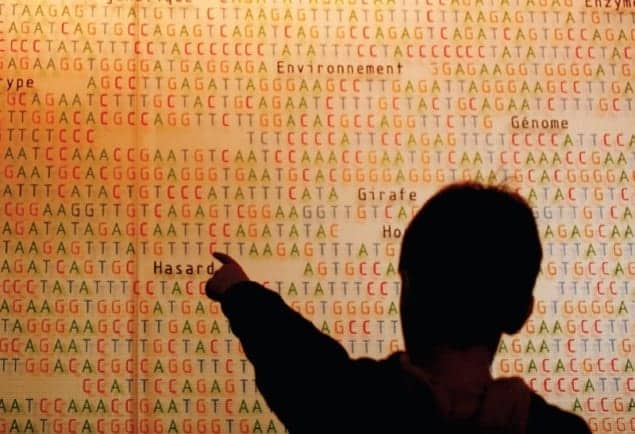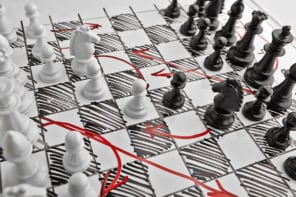Complexity, A Guided Tour
Melanie Mitchell
2009 Oxford University Press
£14.99/$29.95 hb 350pp

Although the world we live in is complex, complexity as a science does not have a long history. For generations, most physicists tried to understand everything in terms of interactions between pairs of idealized “test particles”. Then, about 100 years ago, Henri Poincaré pointed out that a fully interacting three-body system was not just the sum of its three component pairs. The famous “three-body problem” was born.
At the time, few took any notice of this small cloud in the sunny sky of reductionist simplification. Yet even before Poincaré – in fact, before the discovery of atoms – Maxwell and Boltzmann had in some ways anticipated the need for new approaches, following their success in modelling gases as disorganized swarms of elastic molecules. While this method was highly successful for gases, other systems – from galaxies to crystals to flocks of birds – all showed structure emerging from chaos. How, scientists began to wonder, do such diverse constituents “get it together” and organize themselves?
Maxwell himself worried about “demons” that could surreptitiously get to work among gas molecules. If endowed with some capacity for judgement, he reasoned, such demons would be able to make assemblies of molecules behave in very different ways. Talk of demons was anachronistic even in Maxwell’s time, but such new vocabulary often waits on developments in understanding. Until Newton adopted it, “gravity” was a synonym of “solemnity”. Later, other words had to be commandeered to convey precise new meanings – including “field” and, latterly, “inflation”.
One of the most recently rejigged words is “complexity”. In science, this word means a lot more than its dictionary definition, and a number of books have already attempted to define it for the general public. An early (and still popular) one is James Gleick’s magisterial Chaos, published in 1988, which tracks how scientists discovered and tried to make sense of complex effects. But while the anecdotal illustrations and case studies in Gleick’s book are intriguing, most readers emerge breathless with little appreciation of the science of complexity.
In Complexity, A Guided Tour, author and complexity scientist Melanie Mitchell sets out to remedy this. Along the way we meet some of the personalities from Gleick’s book, including Edward Lorenz, who in 1963 showed that initial conditions were the most influential factor in quantitative weather forecasts; and Mitchell Feigenbaum, who discovered new constants of nature relating to the transition from order to chaos. We come across some famous historical physics figures too, including the aforementioned Newton, Maxwell and Boltzmann, and some mathematicians like Hilbert, Gödel and Turing.
Mitchell is a deft guide, and there is plenty of fascinating stuff for readers to discover. In particular, she describes how new developments in genetics – especially evolutionary development biology, or “evo-devo” – indicate that evolution itself is complex. Fresh insights in this field have begun to assign a role to the puzzling “junk DNA” that previously appeared to serve no purpose other than burdening cells. Moreover, evo-devo can make organized structure “evolve” in the dictionary sense of “appear”, without evolution in the Darwinian sense of interplay between infinitesimal mutations and natural selection. This can be a dilemma for evo-devo proponents, who also feel obliged to defend classic Darwinian evolution from attack by creationists.
Yet while we are skilfully guided through the labyrinth of complexity, we only see a part of it. In particular, we are soon steered out of inanimate physics and into artificial intelligence, evolution and genetics. Readers expecting to learn about complex systems in general, and physical ones in particular, will be disappointed. A classic case that is omitted is turbulence, which caused even Wolfgang Pauli to give up and turn to something easier. In 1900, when David Hilbert produced his list of mathematical problems to be solved in the coming century, the Navier–Stokes equations, which describe fluid motion, were one of them. A Guided Tour mentions other challenges on Hilbert’s list, but not this one.
Mitchell sets out to show that science is done by people, but in her account those people are, apparently, mainly based in the US. Moreover, some of the major physics contributors to the science of complexity – for example Lev Landau (who is in Gleick’s book) and Roger Penrose – do not appear, while others like Per Bak, Andrei Kolmogorov and Ilya Prigogine get only passing mentions.
Still, any guide through complexity is welcome: a modern equivalent of Ariadne’s mythical ball of thread, which helped the mighty Theseus to find his way out of the Minotaur’s labyrinth. And, despite my few grumbles, this is an engaging book that deals with some compelling science. Indeed, it is particularly good at displaying how physics ideas are useful in biology (see also Physics World‘s special issue on physics and biology, July 2009). Perhaps it could have been subtitled “A Guided Tour for Biologists”.



